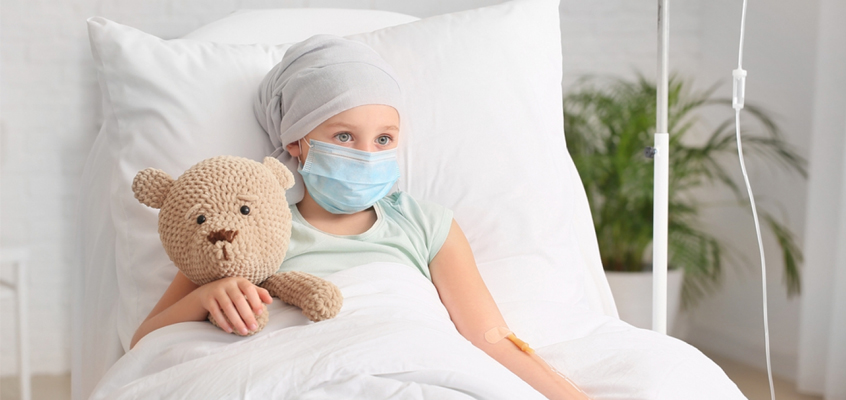By: Dr Silky Jain | Updated: Sep 25, 2023

Introduction:
In India, childhood cancer is a significant concern, with an estimated number of 75,000 children developing cancer annually. However, it represents a smaller proportion compared to adult cancer cases, which number around 14 lakhs annually in India. This article delves into the some of the important aspects of childhood cancer, highlighting its types, warning signs, causes, diagnosis, treatment options, and post-treatment prospects.
Childhood Cancer Types:
Childhood cancer encompasses various types, including:
Warning Signs of Pediatric Cancers:
Symptoms may vary, but common indicators include:
– Recurring or persistent fevers with an unknown cause.
– Unexplained and continued weight loss.
– Headaches, often accompanied by early morning vomiting without nausea.
– Persistent pain in bones, joints, back, or legs.
– Painless lumps or masses, especially in the abdomen, neck, chest, pelvis, or armpits.
– Excessive bruising, bleeding, or the development of rashes.
– A whitish appearance behind the pupil.
– Consistent fatigue or noticeable paleness.
Causes:
– About 90% of childhood cancers have no known preventable cause, and it is attributed to random DNA/genetic defects, unlike adults, where lifestyle and environmental factors like smoking, obesity, and tobacco contribute to genetic defects.
– In 10% of childhood cancer cases, the cause may be an inherited genetic mutation from parents.
– Possible associations with environmental exposures such as parental smoking, home pesticide exposure, and radiation have been noted. However, the cumulative risk from these factors remains extremely low in children. Studies are ongoing to find out the role of other factors like nutrition.
Diagnosis:
Childhood cancer is highly curable, in 80 percent cases in the western world, especially when detected early. Diagnosis methods include:
– For blood cancer, diagnosis involves bone marrow examination, supplemented by specialized tests like flow cytometry to identify the specific type of blood cancer.
– Solid tumors require imaging (Ultrasound/CT scan/MRI) to determine their extent, followed by biopsy. Biopsy samples are microscopically examined to identify cancer cell types. Special markers (immunohistochemistry) differentiate between various tumor types, and genetic tests help with risk assessment.
-Some of the tumours may be picked up with the help of tumour markers. These are the chemicals released by the tumour in blood, and the levels of these biochemical markers in blood may help in diagnosis as well as monitoring of response to treatment.
Treatment:
Treatment strategies are tailored to each cancer type, involving three main modalities used in varying combinations:
– Chemotherapy: Medications designed to target and kill cancer cells, commonly used for blood cancers.
– Surgery: Often utilized to remove solid tumors.
– Radiation: Required in some cases to complement treatment.
– Bone marrow transplant: This is needed in rare advanced cases of blood cancer, which are not responding well to chemotherapy. Also, for certain high-risk solid tumours, bone marrow transplant constitutes an important part of treatment.
It’s crucial to note that many childhood solid tumors necessitate chemotherapy for a cure, even if surgery has removed the tumor completely. Early diagnosis and comprehensive treatment at specialized facilities are key to successful outcomes.
Post Treatment Scenario: Following successful treatment, children can resume normal lives. They can interact with peers, attend school, and even start families of their own. Life expectancy returns to normal if cancer is cured. However, some long-term side effects may occur in rare cases, necessitating regular clinical follow-up after completing therapy.
© Copyright 2025 Dr Silky Jain
Design & Developed By Ezbiz technologies pvt ltd